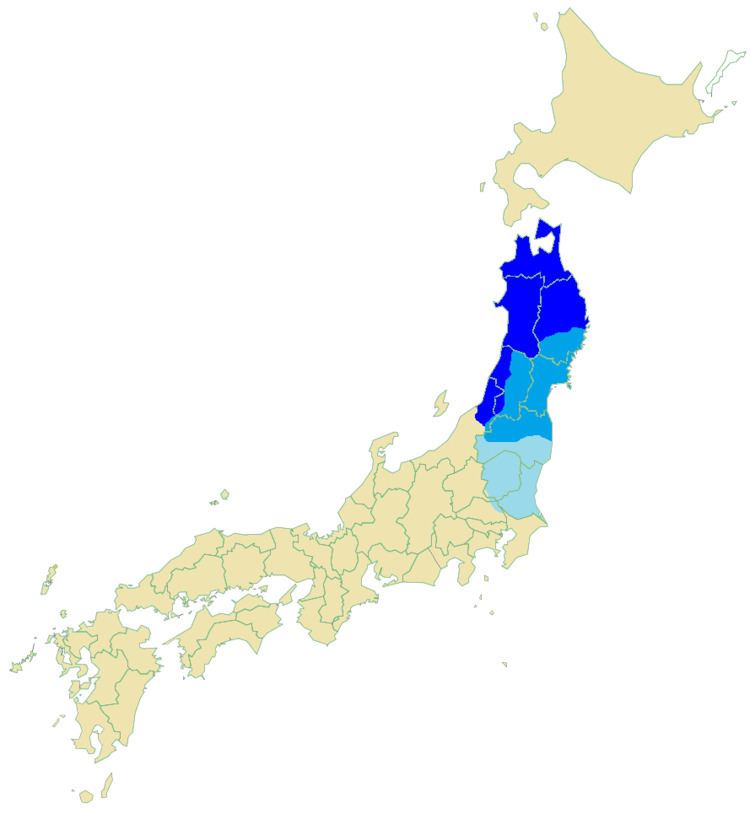Glottolog toho1244 | ||
 | ||
Language family JaponicJapaneseEastern JapaneseTōhoku Japanese | ||
The Tōhoku dialect (東北方言, Tōhoku hōgen), commonly called 東北弁 Tōhoku-ben, is a group of the Japanese dialects spoken in Tōhoku Region, the northeastern region of Honshū. Toward the northern part of Honshū, the Tōhoku dialect can differ so dramatically from standard Japanese that it is sometimes rendered with subtitles in the nationwide media and it has been treated as the typical rural accent in Japanese popular culture (See also Tohoku Regional Accent of TV Tropes).
Contents
Phonetics
A notable linguistic feature of the Tōhoku dialect is its neutralization of the high vowels "i" and "u" (Standard [i] and [ɯᵝ]), so that the words sushi, susu (soot), and shishi (lion) are rendered homophonous, where they would have been distinct in other dialects. In light of this, Tōhoku dialect is sometimes referred to as Zūzū-ben. The vowels tend to be neutralized to [ɨ] in Northern Tohoku dialect and [ɯ̈] in Southern Tohoku dialect.
In addition, all unvoiced stops become voiced intervocalically, rendering the pronunciation of the word "kato" (trained rabbit) as [kado]. However, unlike the high vowel neutralization, this does not result in new homophones, as all voiced stops are prenasalized, meaning that the word "kado" (corner) is pronounced [kaⁿdo]. This is particularly noticeable with /ɡ/, which is nasalized fully to [ŋ] with the stop of the hard "g" [ᵑɡ] almost entirely lost, so that ichigo 'strawberry' is pronounced [ɨzɨŋo]. Standard Japanese does this with /ɡ/ too (see Japanese phonology), but not with the other stops.
Grammar
In grammar, a volitional and presumptive suffix -be or -ppe is widely used in the region. It is a transformation of -beki, a conjugated form of an archaic suffix -beshi. Since the 2011 Tōhoku earthquake and tsunami, a slogan Ganbappe! ("Let's buckle down!") has often been used in the disaster area.
A directional particle sa is also widely used in the region. It is a transformation of sama ("direction") and almost equivalent to standard ni or e. A Muromachi period proverb "Kyō e, Tsukushi ni, Bandō sa" says that the particle sa was once widely used in Kanto region.
Sub-dialects
The Tōhoku dialects can be broken down geographically and by former han domains:
In addition, the Eastern Kantō dialects and the coastal dialects of Hokkaidō have many Tōhoku features.
